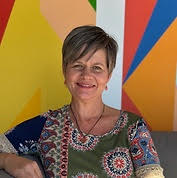
The winds seem to be shifting in favor of electric aviation as a viable solution to airplane carbon pollution, with major airlines and newer players touting electric flights as more than a pie-in-the-sky dream. Some proponents claim that take off is just around the corner, by the early 2020s.
Aviation is one of the fastest-growing sources of greenhouse gas emissions, with direct emissions accounting for about 3 percent of the European Union's total greenhouse gas emissions and more than 2 percent of global emissions. If commercial aviation were considered a country, it would rank seventh after Germany in terms of carbon emissions. Aircraft emissions are expected to grow by 50% by 2050 as demand for air travel increases.
Electric flights could put a substantial bite into growing emissions and help the world meet global climate goals. The electric aviation industry believes the technology is ready to meet the challenge. Earlier this month Air New Zealand announced it was working with European planemaker ATR on hybrid electric aircraft. Other major airlines like JetBlue and UK budget carrier EasyJet are backing electric aircraft start-ups.
Democratizing access to travel
US-based electric aviation company Zunum Aero expects to be among the first on the runway, with its first hybrid electric regional aircraft in the air by the early 2020s, according to Matt Knapp, Zunum Aero Chief Engineer. The benefits, he told TriplePundit, are huge—for the industry, passengers and, importantly, the environment. Electric propulsion cuts community and cabin noise by 75 percent and emissions by 80 percent, he says.“Our vision is to democratize access to high-speed travel by serving thousands of communities across the US that don’t currently have access to high-speed travel,” Knapp told TriplePundit.
Fleets currently flying the short-haul flights under a thousand miles comprise 40 percent of all commercial aviation emissions, Knapp explains. These fleets are aging and due to be replaced – according to an Embry-Riddle study, 8,000 regional aircraft are due to be replaced by 2030.
This means, Knapp says, that “by the 2030s we can eliminate 40 percent of all commercial aviation emissions.”
Air New Zealand eyes carbon neutral growth
Air New Zealand sees the same potential in their move towards hybrid electric aircraft. Under the agreement, the partners will investigate the development of these new solutions and the required systems to support them such as airport and regulatory infrastructure, maintenance, ground and flight operations."Our regional fleet accounts for approximately 40 percent of our domestic emissions so there's an enormous opportunity for carbon savings. It could be a significant contributor to us reaching our twin goals of carbon neutral growth from 2020 and reducing emissions to 50 percent of 2005 levels by 2050," stated Air New Zealand chief executive Christopher Luxon.
Luxon said hybrid aircraft are expected to enter the market in the “next decade or so.”
The electric aviation space is getting crowded. The list of players keeps growing: Airbus E-Fan X is being developed with Rolls-Royce and Siemens as a hybrid-electric airline demonstrator. Eviation Alice is an Israel aircraft being developed by Eviation Aircraft. Wright Electric is a startup with a goal of creating a commercial airliner that runs on batteries and for distances of less than 300 miles and is backed by EasyJet.
Zunum ready to push ahead
But some experts see Zunum as ahead of the pack, according to the Robb Report. Zunum has the backing of Boeing, JetBlue Technology Ventures and the Department of Commerce Clean Energy Fund. Charter provider JetSuite has already signed up to buy up to 100 of their aircraft.Zunum Aero last month selected France’s Safran Helicopter Engines to build engine turbines for its aircraft. The Safran Ardiden 3Z 500 kW turbo-generator is a “significant component of our ability to deliver 80 percent reduction in operating costs and emissions,” Knapp says.
Debate over battery technology
Some observers are skeptical that today’s electric battery technology is anywhere near ready for electric flight. In Wired, Eric Adams reports that the age of electric aviation is still 30 years away. “For all the hype electric aviation gets, the concepts put forth by aerospace companies and startups are just this side of impossible…The problem is, batteries simply do not offer the power-to-weight ratio or cost needed to be feasible, and will not for some time,” Adams wrote.Knapp would strongly disagree.
“We’ve actually designed our planes to be viable using battery technology that is available today by carefully sizing the generation and battery masses for minimum total operating cost at target range,” he told TriplePundit. “The infrastructure we require is pretty straightforward – we need space at airports to store and change batteries, and then a little room to charge them.”
He explains that Zunum’s aircraft is designed to be agnostic to the source that powers its propulsion. “So it can be configured easily to rely on battery plus gas turbine, which is the most common configuration initially, and switch over easily to battery only. It’s also agnostic to battery chemistry type – so we can take advantage of whatever the best technology happens to be. Either way, our propulsion is fully electric.”
Whether it’s within a few years or a few decades, the momentum for electric flight seems unstoppable. And pressure is on the aviation industry to come up with solutions to meet the Carbon Offsetting and Reduction Scheme for International Aviation (CORSIA) scheme to push for a goal of carbon-neutral growth and complement the aims of the Paris Agreement.
To get there, Knapp says, “electric aviation is really the primary solution.”
Image credit: Zunum Aero

Based in Florida, Amy has covered sustainability for over 25 years, including for TriplePundit, Reuters Sustainable Business and Ethical Corporation Magazine. She also writes sustainability reports and thought leadership for companies. She is the ghostwriter for Sustainability Leadership: A Swedish Approach to Transforming Your Company, Industry and the World. Connect with Amy on LinkedIn and her Substack newsletter focused on gray divorce, caregiving and other cultural topics.














